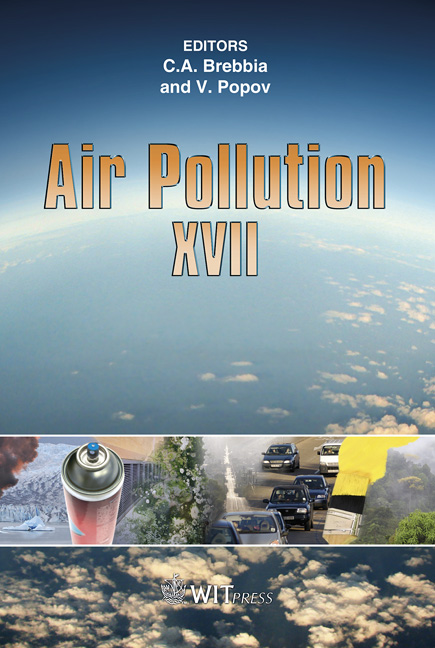The Role Of Meteorological Factors On Year-to-year Variability Of Nitrogen And Sulphur Deposition In The UK
Price
Free (open access)
Transaction
Volume
123
Pages
11
Page Range
51 - 61
Published
2009
Size
1,230 kb
Paper DOI
10.2495/AIR090051
Copyright
WIT Press
Author(s)
M. Matejko, A. Dore, C. Dore, M. Błaś, M. Kryza, R. Smith & D. Fowler
Abstract
FRAME is a statistical Lagrangian model, which describes the main atmospheric processes (emission, diffusion, chemistry and deposition) taking place in a column of air. The model is used to calculate maps of dry and wet deposition for sulphur and nitrogen. Historical emissions data are used in the model to calculate changes in deposition of sulphur and oxidised and reduced nitrogen for the UK at a 5 km x 5 km resolution for the years 1990-2005. Emissions of SO2, NOx and NH3 in the UK have fallen by 77%, 47% and 18% during this period. FRAME calculated reductions in wet deposition to the UK of 56%, 17% and 16% for SOx, NOy and NHx respectively. Inter-annual variation in meteorology was found to have a significant influence on pollutant transport and the national wet and dry deposition budget. This occurred due to differing wind direction frequency as well as annual precipitation. When using year with specific wind conditions, wet deposition can even change by more than 20%. It was also observed that wind conditions have a greater influence on deposition budget than precipitation data. Modelled trends in nitrogen and sulphur wet deposition have been compared with measurements from the national acid deposition monitoring network during this period. A more comprehensive monitoring network has been used to verify model results for deposition of SO4 2-, NO3-, and NH4+ for the year 2005. Keywords: emissions reduction, atmospheric circulation, long-range transport, pollutant deposition, UK.
Keywords
emissions reduction, atmospheric circulation, long-range transport, pollutant deposition, UK





